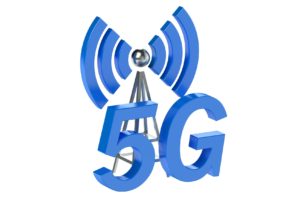The White House recently announced a $400 million research program, called the Advanced Wireless Research Initiative, aimed at building 5G wireless networks across the country. The National Science Foundation (NSF) will lead the project and study four “city-scale testing programs” to see how 5G wireless networks could be implemented over the next seven years.
The big drivers for 5G networks are due to the huge growth in mobile data demand, the need for additional broadband capacity, and the expected advances in Internet of Things (IoT) over the years.
Meeting Demands with 5G Networks
The 5G rollout will initially mean better mobile broadband services with faster speeds and lower latency. See ya later, slow load times! Some experts anticipate 5G networks to meet these minimum standards:
- Download speeds at 10 Gbps or more (bye-bye buffering!)
- Latency of less than 1 millisecond
- Network capacity up to 1,000x current levels
- Increase in reliability over 4G
- Higher energy efficiency
5G Network Design, Engineering and Operational Considerations
With North America and Asia in the lead, 5G commercial services will be available for use by the year 2020, surpassing the networks before it: 4G LTE, 4G, 3G, etc. The new evolving network standards—which won’t be finalized until 2020 – will include a mix of different frequencies, technologies, and approaches.
Frequencies
Cellular networks today use frequencies that range from 800 MHz to 1.9 GHz. Wi-Fi signals have frequencies that range from 2.4 GHz-5.8 GHz. But for the amount of data we download (and the speed need), that’s not fast enough. 5G networks, on the other hand, will use much higher frequencies, ranging from 28 GHz, 38 GHz, or even upwards of 60+ GHz.
Antenna Design
In order to serve the (much) higher frequencies on which 5G will operate, antenna gains must also evolve. Obtaining stronger signals with 5G involves smarter antenna technology, more radio spectrum, and smaller cells. Time to pack more antennae into smaller spaces and get it done in a cost effective way.
Tower Placements
All of these changes will also require new considerations and upgrades for building wireless networks which, for example, could mean a shift from big cell towers that currently cover entire neighborhoods to many more, tiny access points that are placed closer together.
KMB Structural Engineering and Tower Colocation Services
The 5G network will be here before we know it, arriving at a blazingly fast wireless network speed… but that’s what consumers want. Are you prepared to deliver it to them?
Regardless of what technology we’re expecting next, certain things will remain such as speed-to-market in regard to technology deployment. This will increase the need for professional engineers with the latest wireless and survey tools, qualifications and experience to ensure that the technology is designed accurately and deployed correctly. At KMB, we have the experience, resources and technical skills required to meet all your telecom design and build needs.
Contact us to learn more today at 855-755-6234.